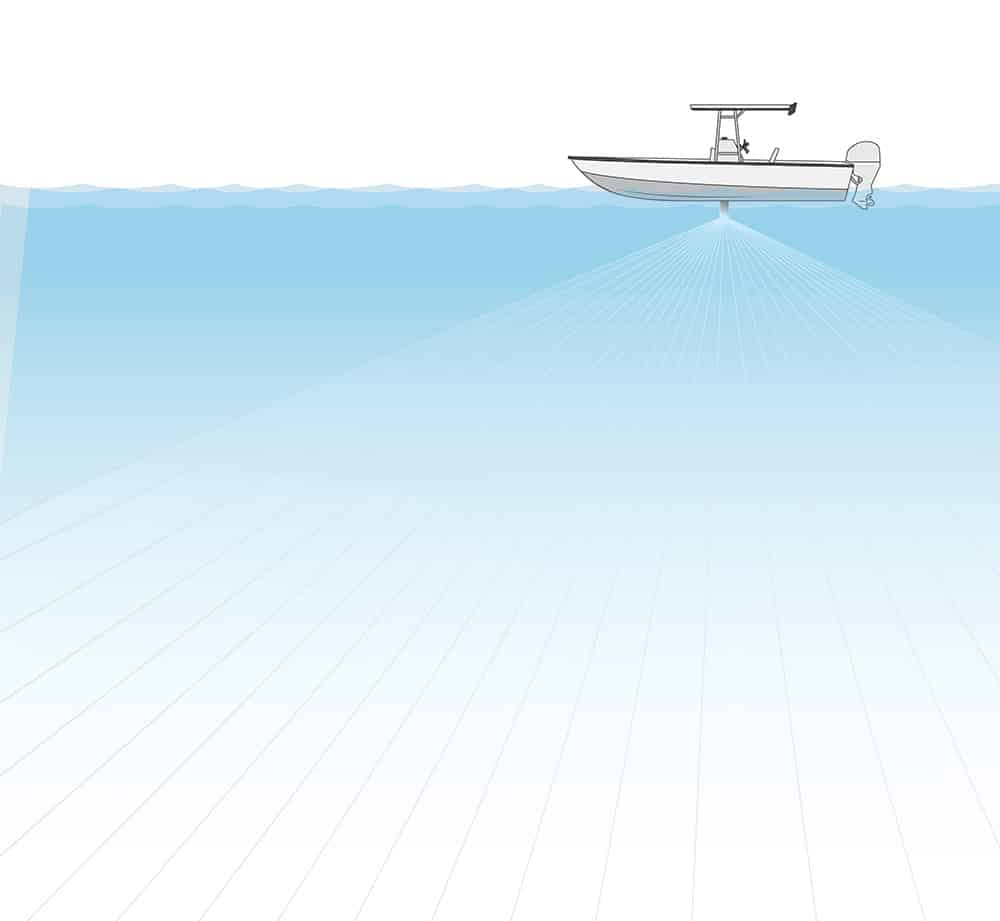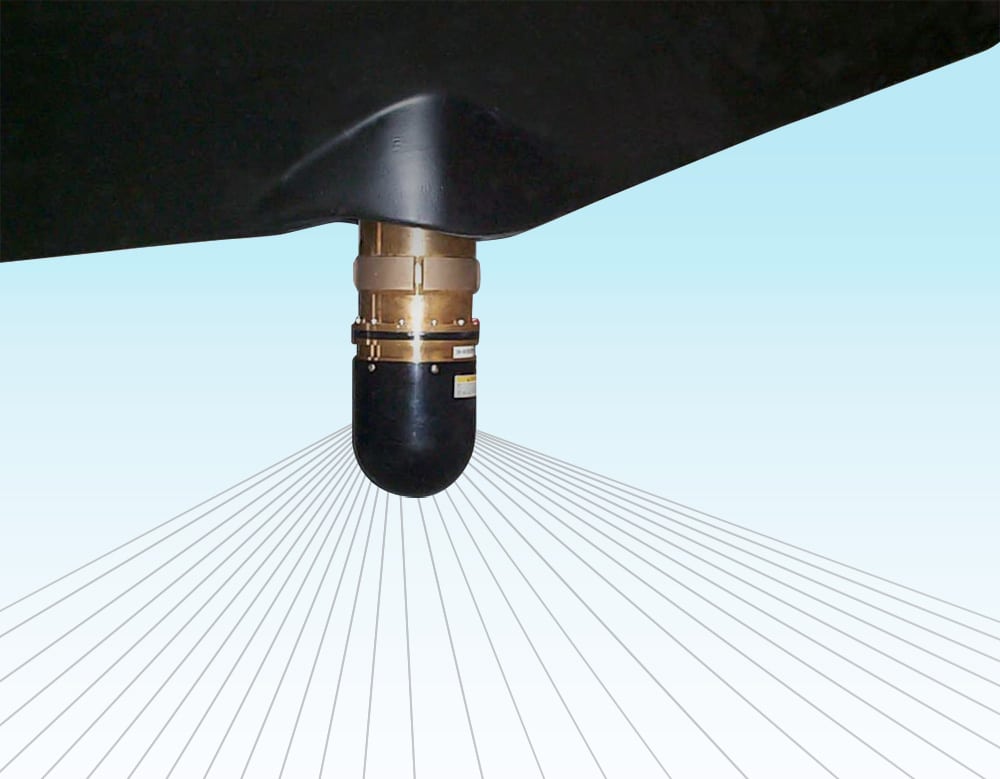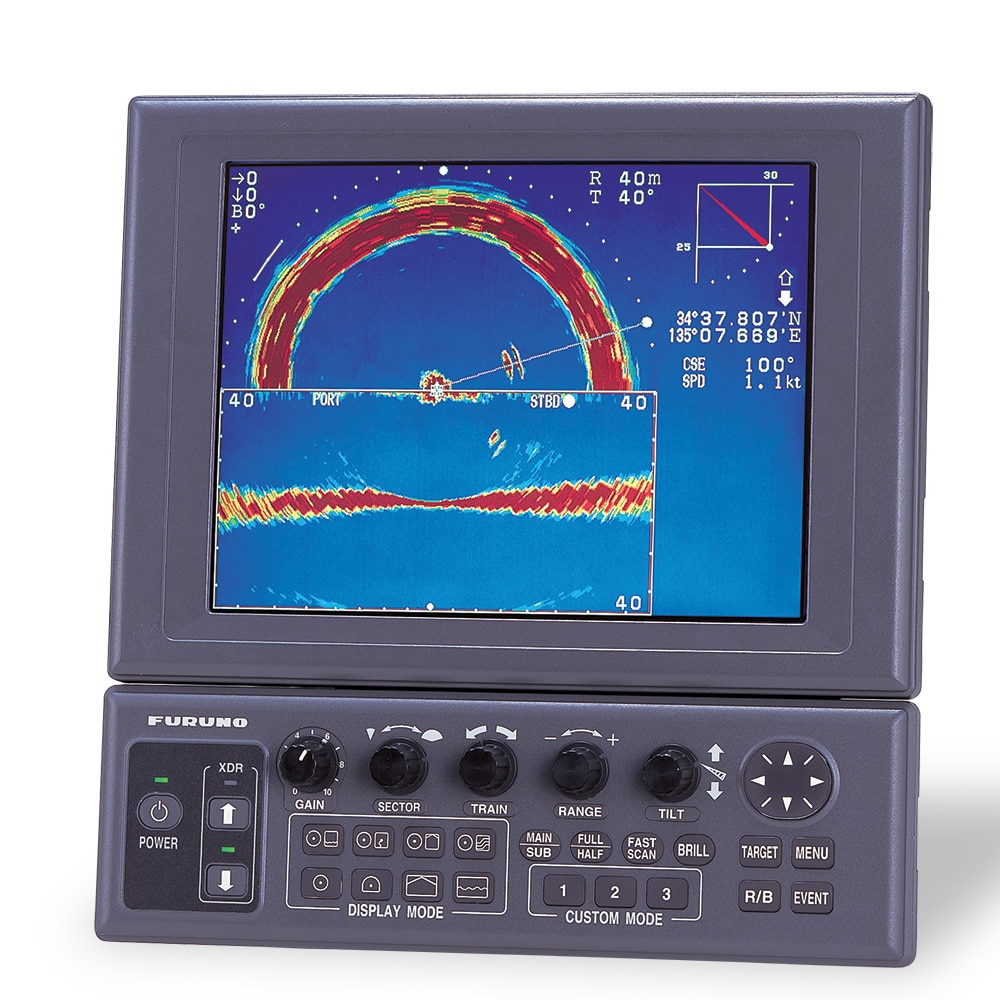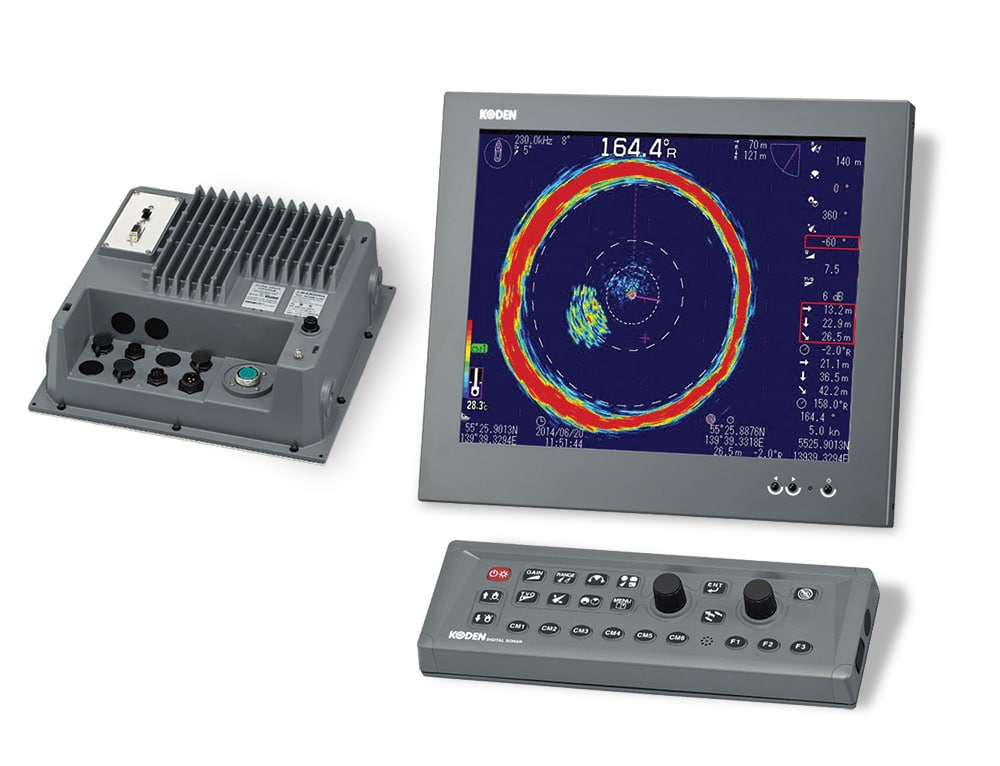
Capt. Jeff Jones knows scanning sonar inside and out. Not only has he used these systems for more than 30 years to find fish, but he has also installed them — most recently aboard the 36-foot Fresh One that he regularly skippers off Southern California.
Soon after completing the intricate installation of the Furuno CH-270 scanning sonar on said boat, Jones put the system to good advantage, finding a school of white seabass under a kelp bed at San Clemente Island. Having spied them at a distance of more than 50 yards, Jones set anchor outside the kelp and scored 10 of the prize croakers.
This is just one example of how scanning sonar benefits boating anglers when fishing relatively shallow inshore waters. Born in commercial applications and costing far more than most fish finders, these sonar systems also work exceedingly well when looking for bluewater fish such as marlin, sailfish and tuna.
True Sonar
The word sonar is bandied about loosely today in describing various fish finders that transmit vertically and sideways. Yet only true sonar can search horizontally in a full circle, creating a display image that’s much like that of radar. For this reason, it is often called scanning or all-around sonar.
The transducers also differ significantly in size and configuration from those used for fish finders. Residing in tubes as large as 8 inches in diameter, the sonar transducer assembly deploys from within a sea chest and protrudes well below the hull when in use, then retracts when the boat is running at higher speeds. Installations are complex and expensive.
In some systems, the transducer mechanically rotates as it transmits. With more-advanced and even pricier scanning systems (what Furuno calls omni sonar) such as the Furuno CSH-8L Mark 2, the transducer is stationary, but it’s equipped with an array of 420 elements that transmit electronically, resulting in a sonar image that’s updated in real time.
Motion sensors on all of Furuno scanning-sonar systems compensate for the rocking of the boat in rough seas and keep the sonar beam angle aimed as level as possible, helping to ensure that the sonar signal does not oscillate.

Sonar Advantage
Such sonar should not be confused with side-scanning systems such as the Furuno DFF-3D, Garmin SideVü, Humminbird Mega Imaging, Raymarine SideVision or Simrad StructureScan HD. With these, a beam sweeps vertically side to side.
Scanning sonar’s horizontal sweep offers the ability to search well beyond what is to the side or under the boat. You can look 360 degrees around the boat and as far out as 6,000 feet with some systems, but you can also limit the search to a designated sector such as 120 degrees in front of the boat.
Jones says that scanning sonar gives him a huge advantage in finding fish in a wide range of situations.

“The Furuno CH-270 sonar on Fresh One lets me search more than 2,000 feet in a full circle around the boat,” Jones points out. “That allows me to find schools of tuna that other boats (without scanning sonar) might drive right by.”
While searching ahead and to the sides proves useful in tuna fishing, Jones likes to look behind the boat when trolling for striped marlin. “I can see the fish swimming into the trolling spread and alert the crew to get ready with drop-back baits,” he says.
When fishing wrecks in shallow water, Jones tilts the beam downward to look for schools deep or to get a better look at bottom structure. Like all scanning sonars, the CH-270 lets you adjust the sonar beam angle up and down.
Types of Scanning Sonar
| CATEGORY | EXAMPLE MODEL | SCAN SPEED | COST |
|---|---|---|---|
| Searchlight | Furuno CH-270 | 11 sec. @ 400-ft. range | $14,000 (w/ display) |
| Sector | Furuno CH-37BB | 7 sec. @ 400-ft. range (45-degree sector step) | $45,495 (w/ display) |
| Broadband Sector | Koden KDS-6000BB | 12 sec. @ 400-ft. range (20-degree sector step) | $14,999 (w/ display) |
| Omni | Furuno CSH-8L Mark 2 | Real time | $75,000 (w/ display) |
Matter of Interpretation
Skippers who possess years of experience in using scanning sonar have few issues with interpreting the display, but newcomers might find it difficult, says Eric Kunz, senior product manager for Furuno USA. This is particularly true when it comes to searchlight sonar, which Kunz likens to rotating a flashlight on a stick. Searchlight models like the CH-270 rotate relatively slowly, taking as long as 64 seconds to make a full-circle sweep, or “train,” as it is called, at the maximum range of 2,500 feet. This is because the CH-270 samples in relatively thin sectors — some as narrow as 6 degrees — at a time. It waits for each return before moving on to the next sector.
“It’s easy to lose targets due to the slow rotation, particularly at long range,” Kunz says. “By the time the sonar circles again, a fast-moving target such as a bluefin tuna might have disappeared from the field of view.”
In shorter range settings, however, train time is reduced. At the 400-foot range, for example, the CH-270 requires just 11 seconds to make a full-circle sweep, and that can help with interpretation, but fish don’t always cooperate by getting that close to the boat.

Audio Detection
With a relatively slow sweep, it’s impractical to stare at the display, waiting for a target to appear. Instead most captains listen to the audio of the sonar’s “tap, tap, tap” in the background.
“When a target appears, the audio changes tone,” says Steve Bradburn, assistant product manager at Furuno USA. “The sounds become more of a rattle, alerting the captain to check the display and possibly change course to intercept the fish.” An optional speaker can amplify the sound.
Sector sonar systems such as the Furuno CH-37BB offer the ability to train faster because they can be adjusted to read bigger sector steps — as much as 45 degrees at one time. The CH-37BB also offers great range, up to 6,000 feet. On the 45-degree setting, one train requires about seven seconds at the 400-foot range.
Most scanning sonar models have a fixed frequency, though dual-frequency models are also available. The Koden KDS-6000 broadband sonar, however, enables you to adjust the frequency from 130 to 210 kHz. As a rule of thumb, the lower the frequency, the greater the range; higher frequency limits range but provides greater detail. You can also adjust the sector steps from 5 to 20 degrees on the KDS-6000. On the 20-degree sector-step setting, it takes 12.2 seconds for one train at the 400-foot setting.
Omni Present
With the real-time presentation of an omni sonar such as the Furuno CSH-8L Mark 2, interpretation is much more intuitive because there is no need to wait for the screen to refresh to reacquire a target, Kunz explains.
“The transducer is blasting in all directions at once to give you an immediate reading all around the boat,” he points out. “And that makes the returns on the display much easier to figure out.
“People want to look around, rather than see one slice at a time,” Kunz adds. Range scales for the CSH-8L Mark 2 extend to more than 5,000 feet. What size boat do you need for a scanning sonar? “A comfortable size would be boats 30 feet and up,” Bradburn says. “The transducer sea chest needs sufficient headroom belowdecks, and systems work best on boats with significant draft so the transducer operates in clean water.”









